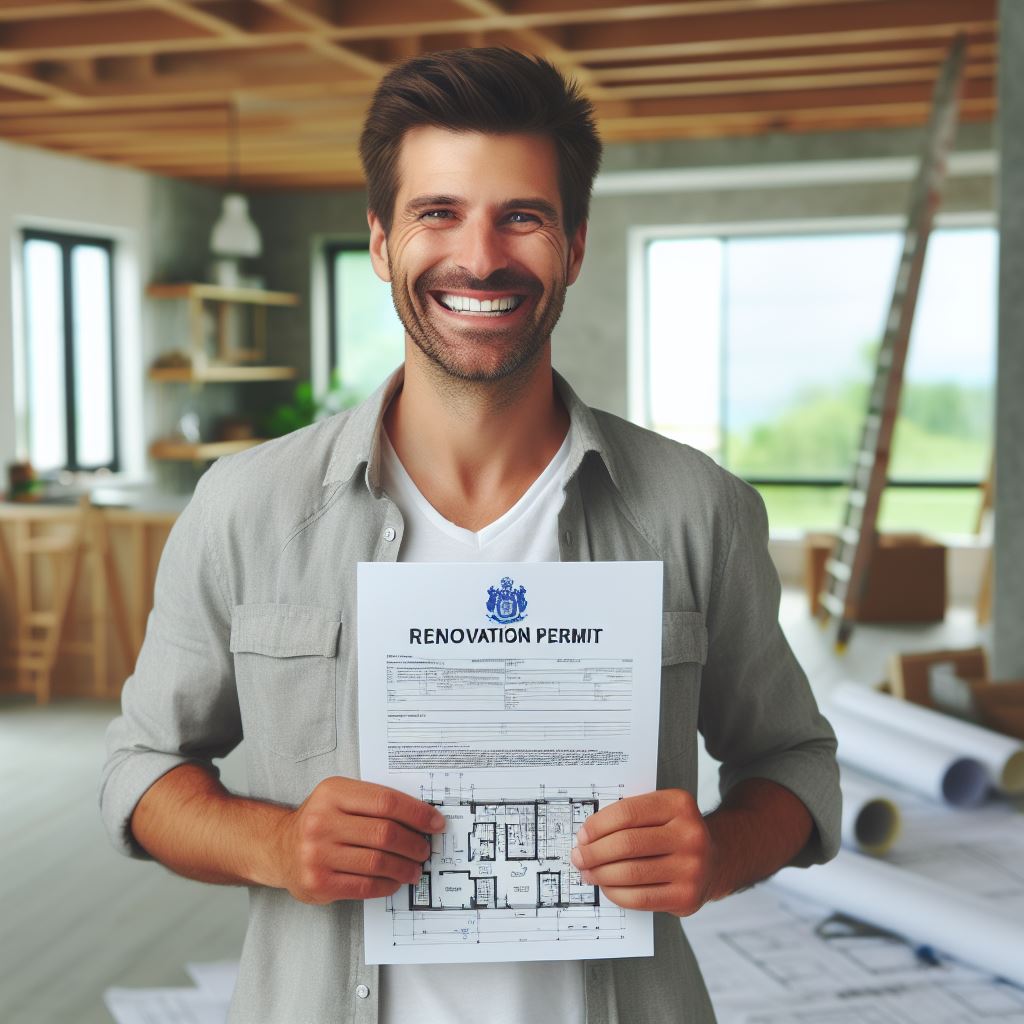Introduction
Safety is paramount when it comes to home additions. It is crucial to adhere to building codes and regulations to ensure the well-being of everyone involved.
Safety should always be the top priority when undertaking any home addition project.
Accidents and injuries can be minimized or even prevented by following proper safety measures.
Building codes and regulations are set standards that dictate how structures should be designed, built, and maintained.
These codes ensure that homes are safe, structurally sound, and meet specific criteria.
They cover various aspects such as electrical systems, plumbing, fire safety, structural integrity, and accessibility.
Adhering to these codes ensures that home additions are built to the highest safety standards.
Building codes typically vary by jurisdiction but generally aim to protect individuals from potential hazards.
They are enforced by local governments through inspections to ensure compliance.
Codes may require permits and inspections at different stages of the project to ensure that safety measures are being followed.
Violation of building codes can result in fines, delays, or even demolition of the structure.
Following building codes is not only legally required but also essential for the safety of occupants and the long-term durability of the addition.
It ensures that the structure can withstand environmental factors and maintain its integrity over time.
In essence, prioritizing safety in home additions by following building codes and regulations is crucial.
It ensures the well-being of everyone involved and contributes to the overall quality and longevity of the addition.
Transform Your Real Estate Decisions
Unlock personalized real estate insights crafted just for you. Get actionable advice designed to amplify your success.
Get StartedUnderstanding building codes
Building codes are regulations that set standards for construction to ensure safety.
They provide guidelines for design, materials, and methods used in building projects.
Compliance with building codes is crucial to protect the occupants and the surrounding community.
Definition and purpose of building codes
Building codes are a set of rules established by authorities to regulate construction practices.
The purpose is to ensure buildings are safe, healthy, and accessible for all occupants.
Building codes also aim to prevent disasters like fires, collapses, and other hazards.
Different types of building codes (local, state, national)
Local building codes
Local governments adopt and enforce their own building codes.
They address specific issues relevant to the local area, such as climate, geography, and cultural heritage.
Examples include regulations for earthquakes, hurricanes, or historic preservation.
State building codes
Many states have their own set of building codes that apply throughout the entire state.
State building codes often incorporate or exceed the requirements of national codes.
They ensure consistency and standardization across the state for construction projects.
National building codes
National building codes are standardized regulations applicable across the country.
They provide a baseline for safety and quality requirements in construction.
Showcase Your Real Estate Business
Publish your company profile on our blog for just $200. Gain instant exposure and connect with a dedicated audience of real estate professionals and enthusiasts.
Publish Your ProfileExamples include the International Building Code (IBC) and National Electrical Code (NEC).
Role of building inspectors
Building inspectors play a vital role in enforcing building codes and ensuring compliance.
They are responsible for inspecting construction projects at various stages, from planning to completion.
Inspectors assess the quality, safety, and adherence to codes in structural, electrical, plumbing, and mechanical systems.
Why building codes are important
Building codes are essential to protect the health, safety, and welfare of building occupants.
They help prevent accidents, injuries, and property damage caused by substandard construction practices.
Compliance with building codes also ensures buildings can withstand natural disasters and other emergencies.
Benefits of following building codes
Safety assurance
By following building codes, homeowners ensure their families and occupants are safe and secure.
Codes address fire safety, structural integrity, and accessibility, among other essential factors.
Compliance with codes reduces the risk of accidents and injuries associated with faulty construction.
Insurance coverage
Many insurance companies require compliance with building codes to provide coverage.
Following codes may result in lower insurance premiums due to reduced risks.
Non-compliance might lead to coverage exclusions or higher insurance costs.
Resale value
Homes constructed according to building codes have higher resale value.
Buyers consider code compliance as a sign of quality, safety, and professionalism.
Compliance ensures that the property meets the minimum requirements, enhancing its marketability.
Legal obligations
Violations of building codes can result in fines, penalties, or even legal action.
By following codes, homeowners fulfill their legal obligations and avoid potential legal consequences.
Ensuring compliance protects both the homeowner and the construction professionals involved.
In fact, building codes are crucial in ensuring the safety, quality, and durability of home additions.
Understanding the different types of building codes and the role of building inspectors is vital for homeowners.
Complying with codes provides numerous benefits, including safety assurance, insurance coverage, increased resale value, and fulfillment of legal obligations.
By adhering to building codes, homeowners prioritize the well-being of occupants and contribute to a safer built environment.
Read: Energy Efficiency in Historic Properties
Common code requirements for home additions
Home additions are a great way to create more space or add value to your property.
However, before diving into a new construction project, it’s important to understand the code requirements that must be followed to ensure safety and compliance.
This blog post will provide an overview of common code requirements for home additions, specifically focusing on structural considerations including foundation requirements, framing and load-bearing walls, and roofing standards.
Structural Considerations
- Obtain the necessary permits: Before starting any construction, it is crucial to obtain the required permits from your local building department. This ensures that your addition meets safety standards and is built according to local regulations.
- Follow setback requirements: Setback requirements determine the minimum distance between your addition and property lines. These regulations help maintain a safe distance from neighboring buildings and provide adequate space for emergency access.
- Comply with height restrictions: Height restrictions dictate the maximum height of your addition. These limitations aim to preserve the aesthetic and functional aspects of the neighborhood and prevent obstruction of views.
Foundation Requirements
- Soil analysis and site preparation: Soil analysis determines the type and stability of the soil, influencing the foundation design. Site preparation involves clearing the area, leveling the ground, and ensuring proper drainage.
- Foundation design: The foundation design should consider the weight of the addition, soil conditions, and local building codes. Common foundation types include concrete slab, crawl space, and full basement.
Framing and Load-bearing Walls
- Structural engineering: It is essential to consult a structural engineer to determine the appropriate framing system and positioning of load-bearing walls to ensure the structural integrity of your addition.
- Materials and construction: Use proper materials that meet code requirements for framing and load-bearing walls. Install beams and columns at strategic locations to transfer the load safely to the foundation.
Roofing Standards
- Roof design: The roof design should consider factors such as climate, rainfall, and snow load. Proper slope, eave overhangs, and ventilation are crucial to ensure longevity and prevent water damage.
- Roof covering materials: Choose roofing materials that comply with local codes and provide adequate protection against weather conditions. Options include asphalt shingles, metal roofing, clay or concrete tiles, or wood shakes.
In short, constructing a home addition requires careful adherence to code requirements to ensure safety and compliance.
Obtaining the necessary permits, following setback and height restrictions, and considering structural aspects such as foundation requirements, framing and load-bearing walls, and roofing standards are essential.
By following these guidelines, you can create a functional and safe addition that adds value to your home while avoiding potential legal and safety issues.
Showcase Your Real Estate Business
Publish your company profile on our blog for just $200. Gain instant exposure and connect with a dedicated audience of real estate professionals and enthusiasts.
Publish Your ProfileRemember, safety should always be a top priority when undertaking any construction project.
Read: Managing Moisture in Old Buildings
Electrical Code Requirements
Electrical code requirements play a critical role in ensuring the safety of home additions.
Compliance with these codes is essential to protect occupants from electrical hazards.
Here are some key considerations and guidelines to follow when it comes to wiring and electrical system installations:
Wiring and Electrical System Considerations
In the realm of home additions, wiring lays the foundation for a safe and functional electrical system. The code demands meticulous planning of wiring routes.
It’s not just about connecting wires; it’s about strategically placing them for efficiency and accessibility.
The wire gauge is crucial. Compliance with load requirements prevents overloads and potential hazards.
Neat organization of wires simplifies future maintenance, aligning with the code’s emphasis on long-term safety.
Installation of Outlets, Switches, and Fixtures
Outlets, switches, and fixtures are the touchpoints of your electrical system.
Adhering to spacing codes ensures outlets are conveniently located without sacrificing functionality.
Switches follow guidelines for height and accessibility, contributing to both aesthetics and ease of use.
Fixture installation demands precision. Compliance with safety codes, specific to each fixture type, guarantees proper illumination without compromising safety.
It’s not just about plugging in; it’s about doing so in a way that aligns with established safety standards.
Grounding and GFCI Protection
Grounding is the backbone of electrical safety. Every circuit must be grounded to prevent electrical shocks.
The code sets the standard for the grounding system, ensuring that it effectively protects against potential hazards.
GFCI (Ground Fault Circuit Interrupter) protection is mandatory in wet areas. Kitchens and bathrooms, in particular, require these devices to swiftly cut off power in the event of a ground fault.
This emphasis on rapid response showcases the code’s commitment to preventing accidents in high-risk zones.
Prioritize Safety Every Step of the Way
From planning wiring routes to installing outlets and fixtures, the underlying theme is safety.
The code acts as a guide, urging homeowners to prioritize safety without compromise.
It’s not just about meeting requirements; it’s about fostering an environment where electrical systems function reliably and securely.
Avoid Common Pitfalls
DIY enthusiasts may overlook critical details. The code explicitly cautions against daisy-chaining outlets and exceeding the allowed number on a circuit.
Complying with local codes regarding wire types and outlet specifications ensures that common pitfalls are avoided.
Professional Inspection is Key
The culmination of your efforts should involve a professional inspection.
A qualified electrician can ensure that your electrical additions align with local codes, from the integrity of the wiring to the proper functioning of outlets and switches.
It’s a final layer of assurance that your home is not only functional but also meets the highest safety standards.
The journey through electrical code requirements for home additions is a commitment to safety.
From wiring considerations to fixture installations, every step is guided by a code that prioritizes the well-being of your family.
By understanding and implementing these regulations, you not only meet standards but exceed them, creating a home addition that is as safe as it is functional.
Always prioritize safety – it’s not just a code; it’s a commitment to your family’s well-being.
Showcase Your Real Estate Business
Publish your company profile on our blog for just $200. Gain instant exposure and connect with a dedicated audience of real estate professionals and enthusiasts.
Publish Your ProfileRead: Navigating Local Zoning Laws in Renovations

Plumbing code requirements
Plumbing is an essential component of any home addition, and it must be installed according to specific code requirements.
Proper plumbing installation ensures the safe and efficient functioning of water supply and drainage systems.
Here are some important considerations to keep in mind:
Plumbing code requirements
Before starting any home addition project, it is crucial to familiarize yourself with the plumbing codes applicable in your area.
These codes are designed to ensure the safety and performance of plumbing systems.
They cover various aspects such as pipe materials, pipe sizing, venting, and fixture installation.
Proper plumbing installation
Hiring a licensed plumber is essential to ensure that the plumbing installation meets all code requirements.
A professional plumber has the knowledge and expertise to properly install pipes, fixtures, and appliances while adhering to the plumbing codes.
They will obtain the necessary permits and inspections to ensure compliance.
Water supply considerations
When adding a new room or expanding an existing one, it is important to evaluate the impact on the water supply system.
The existing water lines may need to be extended or upgraded to accommodate the additional fixtures and appliances.
Adequate water pressure should also be maintained throughout the home, which may require the installation of a pressure regulator.
Drainage considerations
Proper drainage is crucial to prevent water damage and plumbing issues.
The additional room may require the installation of new drain lines that connect to the existing sewer or septic system.
It is important to ensure that the added load does not overwhelm the existing system, as this can lead to backups and costly repairs.
Proper slope and venting of drain lines are also critical to ensure effective drainage.
Ventilation requirements
Adequate ventilation is necessary to remove odors, moisture, and potentially harmful gases from plumbing fixtures and appliances.
Vent pipes allow air to enter the drain system, facilitating the smooth flow of wastewater.
Code requirements specify the size, location, and installation of vent pipes to prevent the build-up of sewer gases and maintain the proper functioning of the drainage system.
Pipe insulation requirements
Depending on the climate you live in, pipe insulation may be necessary to prevent freezing and bursting during cold temperatures.
Insulating pipes that run through unheated spaces, such as basements, crawl spaces, and exterior walls, can help protect them from extreme temperature fluctuations.
Insulation also improves energy efficiency by reducing heat loss from hot water pipes.
In general, plumbing is a vital aspect of any home addition, and it must be undertaken in accordance with specific code requirements.
Proper plumbing installation, considering water supply, drainage, ventilation, and pipe insulation requirements, ensures a safe and functional plumbing system.
Hiring a professional plumber who is knowledgeable about local codes is crucial to guarantee compliance and avoid potential issues down the line.
By adhering to plumbing codes, you can have peace of mind knowing that your home addition is safe, efficient, and built to last.
Read: Period-Appropriate Decor for Heritage Homes
Accessibility code requirements
When it comes to building home additions, safety should always be the top priority.
Following codes and regulations is essential to ensure a safe and accessible living space for everyone.
Showcase Your Real Estate Business
Publish your company profile on our blog for just $200. Gain instant exposure and connect with a dedicated audience of real estate professionals and enthusiasts.
Publish Your ProfileIn this section, we will discuss the accessibility code requirements that need to be met when constructing home additions.
Ensuring universal accessibility
Ensuring universal accessibility is crucial when adding new spaces to your home.
These accessibility code requirements are designed to accommodate individuals with disabilities or mobility limitations.
By adhering to these codes, you can create an inclusive environment for all.
Requirements for ramps, doorways, and thresholds
One important aspect of universal accessibility is having appropriate requirements for ramps, doorways, and thresholds.
Ramps should have a slope no steeper than 1:12 and be equipped with handrails on both sides.
This allows individuals using mobility aids to navigate smoothly between different levels of the home.
Doorways should have a minimum width of 32 inches to accommodate wheelchairs and walkers.
Additionally, thresholds should be level or have a beveled edge to prevent tripping hazards.
Safety features for staircases and railings
Another key area to consider when it comes to accessibility code requirements is the safety features for staircases and railings.
Staircases should have uniform rise and run dimensions, with a maximum rise of 7.75 inches and a minimum run of 10 inches.
This ensures a consistent and safe climbing experience for all individuals.
Handrails should be installed on both sides of the staircase, providing stability and support.
The height of the handrail should be between 34-38 inches from the leading edge of the stair tread.
This allows individuals to maintain balance while using the stairs.
Furthermore, railings play a crucial role in ensuring safety. Any open sides of a home addition that are 30 inches or more above the ground should have railings.
The railing height should be at least 36 inches, measured from the ground or the walking surface.
It is important to ensure that the railing design prevents individuals from slipping through or getting stuck.
Other safety features
In addition to making home additions accessible, it is essential to consider other safety features.
These may include the installation of smoke detectors, carbon monoxide detectors, and fire extinguishers.
Adequate lighting should be provided throughout the home addition, both indoors and outdoors, to prevent accidents and ensure visibility.
When undertaking a home addition project, it is important to work with a professional contractor who is well-versed in local building codes.
They will ensure that your project meets all necessary requirements and passes inspections.
Failing to comply with safety codes can result in fines and, more importantly, put the occupants of the addition at risk.
In review, paying close attention to accessibility code requirements is crucial when planning and constructing home additions.
By following these codes, you create a safe and inclusive living space for everyone.
Whether it’s ensuring proper ramps, doorways, and thresholds or installing safety features for staircases and railings, these code requirements should not be overlooked.
Remember, safety should always come first when enhancing your home.
Fire and safety code requirements
When it comes to home additions, ensuring safety should be a top priority.
This means complying with fire and safety code requirements, installing smoke detectors and fire alarms, using fire-resistant materials and insulation, and meeting egress requirements for emergency exits.
Showcase Your Real Estate Business
Publish your company profile on our blog for just $200. Gain instant exposure and connect with a dedicated audience of real estate professionals and enthusiasts.
Publish Your ProfileFire and safety code requirements are put in place to protect occupants in the event of a fire or other emergencies.
These codes outline the minimum safety standards that must be met during construction, including specifications for electrical systems, structural components, and fire prevention measures.
Installation of smoke detectors and fire alarms
Installing smoke detectors and fire alarms is a crucial step in safeguarding your home.
Smoke detectors should be placed in every bedroom, outside sleeping areas, and on every level of the home.
They must be interconnected so that if one detects smoke, all alarms will sound. Fire alarms should also be installed to provide early warning in case of a fire.
Fire-resistant materials and insulation
Using fire-resistant materials and insulation can significantly increase the safety of your home.
These materials are designed to resist ignition and slow down the spread of fire, giving occupants more time to evacuate.
Fire-resistant materials include gypsum board, concrete, and metal studs. Insulation with a fire rating can be used to prevent the spread of flames and smoke.
Egress requirements and emergency exits
Egress requirements and emergency exits are essential for providing a safe way out of a home during an emergency.
These requirements specify the number, size, and location of exits based on the occupancy and size of the addition.
Emergency exits should be easily accessible, well-lit, and equipped with panic hardware for quick and easy egress.
To ensure compliance with fire and safety codes, it is crucial to work with a professional architect or contractor experienced in building additions.
They will be knowledgeable about the specific requirements in your area and can help you design and construct a safe and code-compliant addition.
In a nutshell, safety should always be the top priority when adding onto your home.
By following fire and safety code requirements, installing smoke detectors and fire alarms, using fire-resistant materials and insulation, and meeting egress requirements, you can create a secure and protected living space for you and your family.
Don’t compromise on safety – it’s always better to be safe than sorry.
Permitting and inspections
When it comes to home additions, ensuring the safety of the construction is of utmost importance.
One crucial aspect of ensuring safety is obtaining necessary permits and scheduling inspections during various construction phases.
Failure to comply with these codes can lead to serious consequences.
Obtaining necessary permits for home additions
Before starting any home addition project, it is essential to obtain the required permits.
Permits can usually be acquired from the local building department or the municipality.
The purpose of permits is to ensure that the addition meets all the necessary safety codes and regulations.
Permit applications typically require detailed information about the project, including plans and specifications.
It is essential to provide accurate information and pay the appropriate fees when submitting the permit application.
Scheduling inspections during construction phases
Inspections play a vital role in verifying that the home addition is being constructed safely and according to code.
Various inspections are typically required throughout different phases of construction.
These inspections may include foundation inspections, framing inspections, electrical inspections, plumbing inspections, and final inspections.
Each inspection focuses on ensuring that specific aspects of the construction meet the required safety standards.
It is the responsibility of the homeowner or the contractor to schedule these inspections at the appropriate times.
Failure to request inspections or passing inspections may result in delays, fines, or even the removal of unauthorized construction.
Showcase Your Real Estate Business
Publish your company profile on our blog for just $200. Gain instant exposure and connect with a dedicated audience of real estate professionals and enthusiasts.
Publish Your ProfileConsequences of non-compliance with codes
Non-compliance with safety codes and regulations can have serious consequences for homeowners.
If home additions are not built in compliance with codes, the homeowner may face legal penalties.
In some cases, non-compliance can result in fines, mandatory repairs, or in extreme cases, the demolition of the addition.
Most importantly, non-compliant home additions pose significant safety risks for the occupants and even neighboring properties.
In the event of accidents or injuries caused by non-compliant additions, the homeowner may also be liable for damages.
Therefore, it is crucial to understand and adhere to the safety codes and regulations when planning and constructing home additions.
Obtaining the necessary permits and scheduling inspections not only keeps you in compliance with the law but also ensures the safety and structural integrity of the addition.
By following these codes, you can have peace of mind knowing that your home addition is both legal and secure.
Conclusion
It is of utmost importance to adhere to building codes for the safety of home additions.
By hiring professionals who are familiar with code requirements, homeowners can create a safer living environment.
Following these codes ensures that the construction is done properly and reduces the risk of accidents or structural failures.
Building codes are designed to protect both the occupants of the home and the surrounding community.
They cover various aspects such as electrical wiring, plumbing, structural integrity, and fire safety.
Violating these codes can result in fines, legal consequences, and, most importantly, compromised safety.
By working with professionals who understand and follow these codes, homeowners can have peace of mind knowing that their addition is in compliance with the necessary safety standards.
These professionals are well-versed in local building codes and can ensure that the project meets all requirements.
Adhering to building codes also increases the value of the property.
Homebuyers and insurance companies prefer homes that have been built or renovated according to code.
By following these regulations, homeowners can create a space that not only meets their needs but also protects their investment.
Ultimately, following building codes for home additions is crucial for the overall safety and well-being of everyone involved.
It provides a sense of security, minimizes potential risks, and enhances the longevity of the structure.
By prioritizing safety and hiring professionals who understand the importance of code compliance, homeowners can create a living environment that is both aesthetically pleasing and safe.




